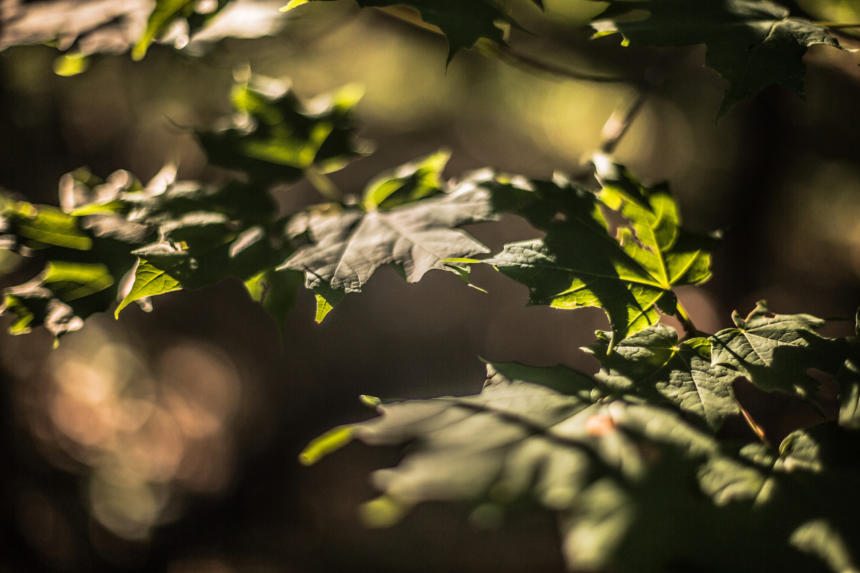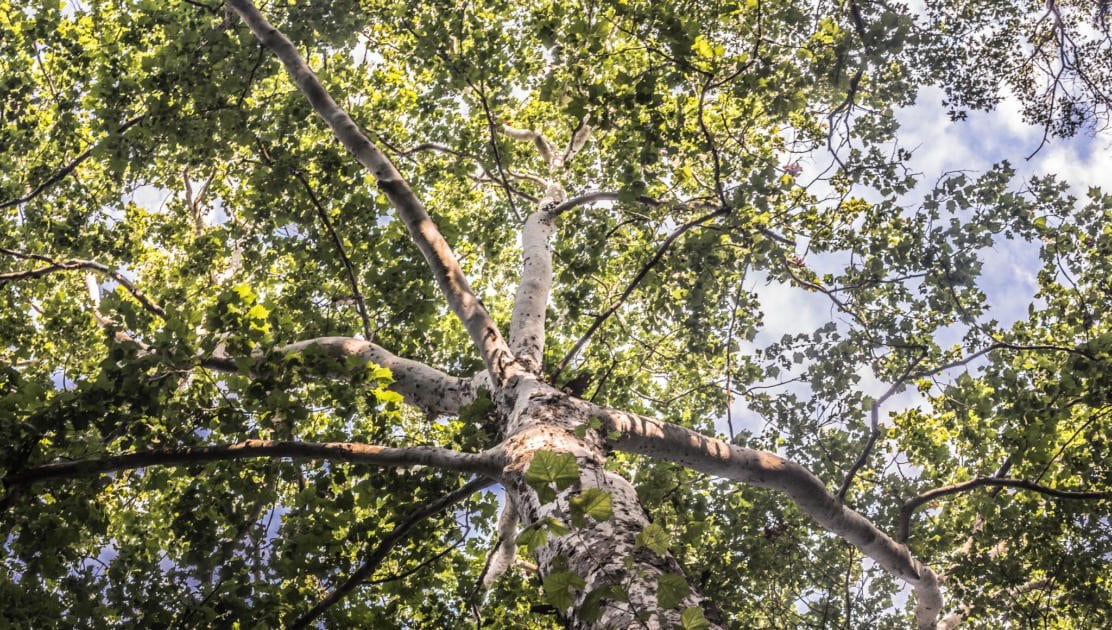In Pursuit of Beauty
What does an appreciation of natural beauty tell us about the values of individuals that exist to perceive it?
By Matt MilesIn recent months, perhaps because of the ugliness circulating throughout the national and international public spheres, beauty and its pursuit have become a subject of contemplation for me. Beyond something that is pleasing to the human senses, what constitutes beauty? And what does a genuine appreciation of beauty—particularly natural beauty—suggest about the values of individuals and cultures that exist to perceive it?
In his book, The Songs of Trees, biologist David George Haskell approaches some of these questions through the philosophical concept of ecological aesthetics. Ecological aesthetics enfolds the experience of beauty into an all-encompassing relationship that bridges the gap between the human and more-than-human worlds to yield not only a transcendent aesthetic but also something like what Aldo Leopold first referred to as a “land ethic.”
Haskell has identified the process for realizing and practicing an ecological aesthetics as an unselfing–a phrase borrowed from Iris Murdoch’s discussion of Plato’s aesthetics, but which also refers to and builds on the transhuman relationship J. A. Baker explored in his work about peregrine falcons. Haskell writes, “An ethic of belonging would merge and extend Murdoch and Baker, yielding sophisticated understanding of beauty’s relationship to ethics fed by extended embodied experience. We unself into birds, trees, parasitic words, and, sooner or later, soil; beyond species and individuals, we open to the community from which we are made.”
Over the course of several years since I made the transition from a mostly urban and suburban existence to a simpler lifestyle based on subsistence farming and homesteading in the Blue Ridge Mountains of North Carolina, I have tried to implement a practice of ecological aesthetics similar in many ways to the one Haskell describes. My ideas on the subject have been influenced to a large degree by the writings of David Abram, whose wonderful book The Spell of the Sensuous I began reading my first summer here. In both The Spell of the Sensuous and his later book Becoming Animal, Abram has articulated ideas similar to Haskell’s and expounded on them using evidence from fields such as linguistics, phenomenology, anthropology, and psychology.
The fundamental concept of Abram’s approach to bridging the artificial rift between the human and more-than-human worlds, however, is the idea of reciprocity. Reciprocity might be described as a sort of fluid, transcendent experience whereby the subjective consciousness of the individual human is brought into balance and dialogue with the more-than-human world in which it is embedded. The concept of reciprocity is similar in many ways if not identical to Haskell’s notion of unselfing. Also inherent in reciprocity is the ethical imperative for justice and balance to prevail in the relationship between the human and more-than-human worlds.
How one goes about engaging in a practice of reciprocity is a matter that Abram has explored deeply, and one for which it seems there is no very succinct answer. In my own life and experiences, however, I have found opportunities for reciprocal relationships of varying degrees of intensity everywhere, once I quiet my mind, open my senses to them, and allow them to accrue and develop over time.
Observing and understanding a landscape or a natural community over time is especially important to developing an aesthetic relationship with it. On a practical level, this is one of the key tenets of permaculture, an integrated, whole-systems approach to inhabiting and cultivating a landscape, and a land ethic in its own right, which we’ve sought to employ here on our farmstead. The principles of permaculture stress the importance of observing and understanding a landscape and its dynamics over the course of seasons and at different times of day and in a variety of weather conditions. This applies, for example, to forestalling siting a building or planting an orchard until one has a deeper understanding of the natural world that will be affected by such human interventions, until one has developed a rapport with the place.
While permaculture is one approach to developing a reciprocal relationship with a place, the practice of art and craft rooted in place is perhaps a more universal example, directly related as it is to the field of aesthetics. The landscape painter, the photographer, the poet, the sculptor—all strive to create work which exceeds mere representation of a thing or a place, but which captures its essence, its spirit, its inner life, and communicates that to others. But all creative endeavors, before they become art and can be communicated with others, ultimately spring forth from the seeds of observation, appreciation, and affinity for the specifics of the landscape. It is the individual voices and characters with whom we conduct a dialogue and engage with in a reciprocal relationship that make this experience possible.

For me, there is the pair of great blue herons that frequent our pond twice a year, feeding on whatever is left of the bass, bluegill, and catfish the previous owner stocked. These magnificently beautiful, hulking, yet also graceful birds muscle out the Pekin and Muscovy ducks for space on the water but flee to the treetops when humans approach. But they are a sort of genius loci, a spirit of the place, the first animal we noticed one chilly November afternoon when we began our move onto the farmstead that has become our home. Both my girlfriend and I were struck by the herons, who hold and return our gaze in recognition for a moment before fleeing. We have always regarded their presence here as a good omen.
Additionally, there are the two ancient oaks atop the mile-long hill on the Blue Ridge Parkway where I run in the mornings. The route is lined with hardwoods and pines for most of the way, and these are a welcome source of shade and peace. The pines are a constant deep green and brown suffused with motes of dust in the morning light that settle on carpets of amber needles. The oaks are ever-changing in the pale, pointilist smears of bud-leaves that appear in April through to the fiery leaves of October that burn themselves out phoenix-like in the crisp autumnal air six months later. But the pair of oaks on the hill have a kind of quiet presence that is even more distinct, an angular elegance of twisted and knotted limbs emerging from lichen-covered trunks. Their form is beautiful, but there is something benevolent and soothing and permanent about them. I sense a consciousness there and it seems to sense me as well.
Then there are the natural elements, the chemical and mineral aspects of our surroundings that are seemingly inanimate: rocks, waters, and skies, the substrate upon which all life depends for its existence. As the poet Robinson Jeffers has acknowledged, there is beauty here too, “the beauty of transhuman things, \ Without which we are all lost.” While Jeffers certainly had an artistic affinity for the gray granite cliffs and the surging seas surrounding his home on the shores of the Pacific, there is little doubt to me that his relationship with the surrounding landscape was one of reciprocity, as he contemplated and wrote of the fishermen who worked the coast; or more tellingly, when he apprenticed himself to a stonemason so that he too could learn the art and build a home for his family that is of both himself and of the essence of this primal place where he spent almost his entire life living and working.
And so, for me anyway, natural beauty vis-a-vis an understanding of ecological aesthetics, is about more than just a personal, subjective experience of something pleasing to the senses, but about establishing an authentic and enduring relationship with the natural world that supports us, and learning to hear the non-human voices which seek to engage with us in a dialogue of reciprocity. Through such a practice of unselfing, there is the potential for every human being to experience profound beauty, but also to realize our vital connection with the more-than-human world in which we are embedded and without which we cannot survive.
Matt Miles is a writer, poet, permaculturist, maker, and rock climber. His work has previously appeared in Dark Mountain. He lives in the Blue Ridge Mountains of North Carolina where he and Tasha Greer run the reLuxe Ranch, a whole systems farmstead.
